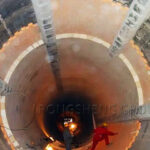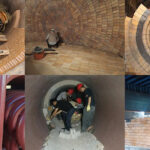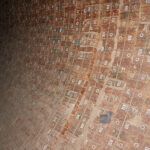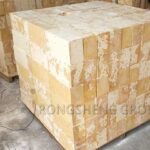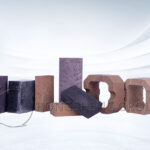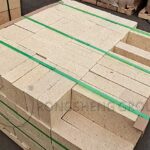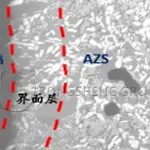From a professional point of view, the ring lining method is generally used for Cement Rotary Kiln Bricks Lining. In the cement rotary kiln, the correct masonry of refractory bricks is of great significance to the long-term safe operation of the rotary kiln. Therefore, refractory bricklaying personnel must strictly follow the masonry requirements for the construction and installation of each refractory brick.
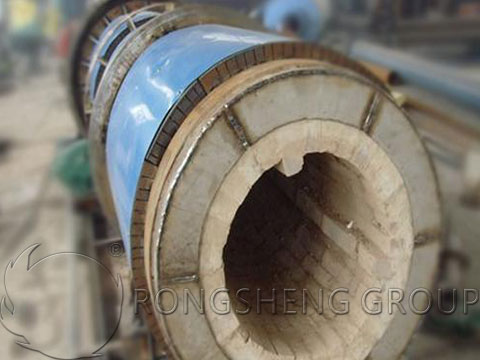
- Before rotary kiln refractory brick lining, the kiln shell should be thoroughly inspected and cleaned. Prepare for the release of the wire.The longitudinal reference line of the rotary kiln shall be placed every 1.5 ~ 2.0M along the circumference. Each should be parallel to the axis of the rotary kiln.Put a ring every 10M around the baseline. Put a construction control line every 1 ~ 2M. The hoop lines should be parallel to each other and perpendicular to the axis of the kiln.
- In the rotary kiln, the basic requirements for bricklaying are: the brick lining is close to the shell, the bricks are tight with the bricks, the kiln refractory bricks are straight, the circles are accurate, the cement kiln bricks are locked tightly, they are in a good position, and they are not drooping. In short, it is necessary to ensure that the brick lining and the kiln body are reliably concentric during kiln operation. The stress in the brick lining should be evenly distributed throughout the lining and each brick lining.
- The brick joints should be horizontal and vertical, and the allowable deviation of masonry. The brick joints of refractory bricks masonry in various kilns should be no more than 2mm.
- When masonry, it is necessary to distinguish the big and small heads of the bricks and not to turn them upside down.
- When kiln lining, “steps or climbing” should not appear. When it appears, it should be adjusted in time with different types of refractory brick lining or narrow steel plates or mud. In case of unevenness of the cylinder, it can be leveled with thick glue, and it should not be lined with cardboard or other things.
- When locking the mouth, the selection of the locking brick should be appropriate. After the lock brick is pushed in from the side, the gaps in all aspects should be consistent, and then wedged with steel plates. Wedge brick steel plates should be used as little as possible.
- When laying refractory bricks in the rotary kiln, it is strictly prohibited to spray water on the refractory brick lining.
- After the brick lining of the whole kiln is completed, the brick lining of the whole kiln should be inspected and necessary tightened.
Other Considerations:
The thickness of the joint steel plate for dry masonry is generally 1 ~ 1.2mm. Require smooth, no curling, no distortion, no burrs. The width of each board should be less than the brick width of about 10mm. When masonry, the steel plate must not exceed the edge of the cement kiln bricks, and no sounding and bridging of the steel plate should occur.
Only one steel plate is allowed in each seam. Use narrow steel plates for adjustment as little as possible. The cardboard used for expansion joints should be placed according to the design.
When locking bricks, use flat bricks to lock. The adjacent ring should be staggered by 1 or 2 bricks. The processed brick circle at the terminal should be built 1 to 2 rings in advance.
In addition, the last lock brick of the whole kiln must be finely processed. It is strictly forbidden to lock the kiln refractory bricks with casting materials alone. The last lock brick can be fixed with castable. No more than one steel plate in the brick joint.
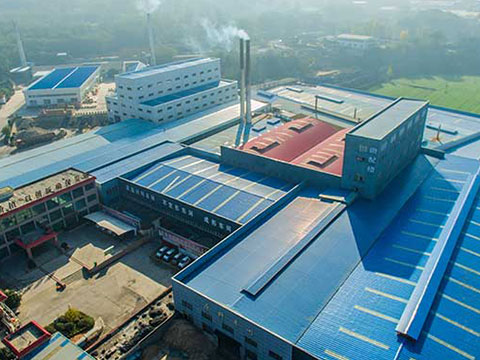
To complete the perfect masonry of refractory brick lining of rotary kiln. Not only professional, experienced refractory brickwork workers are needed. There is also a need for high-quality kiln refractory bricks products. Rongsheng refractory fire brick manufacturer provides high quality rotary kiln refractory lining products for cement rotary kiln. If your cement rotary kiln needs refractory brick lining, please contact us.

